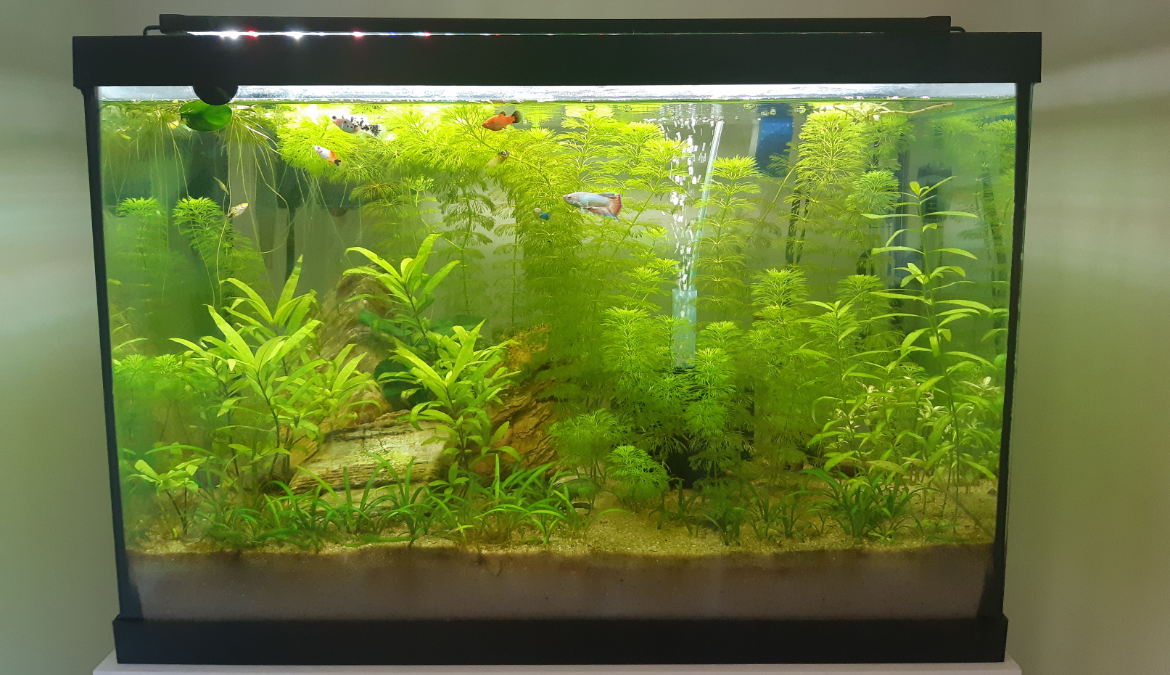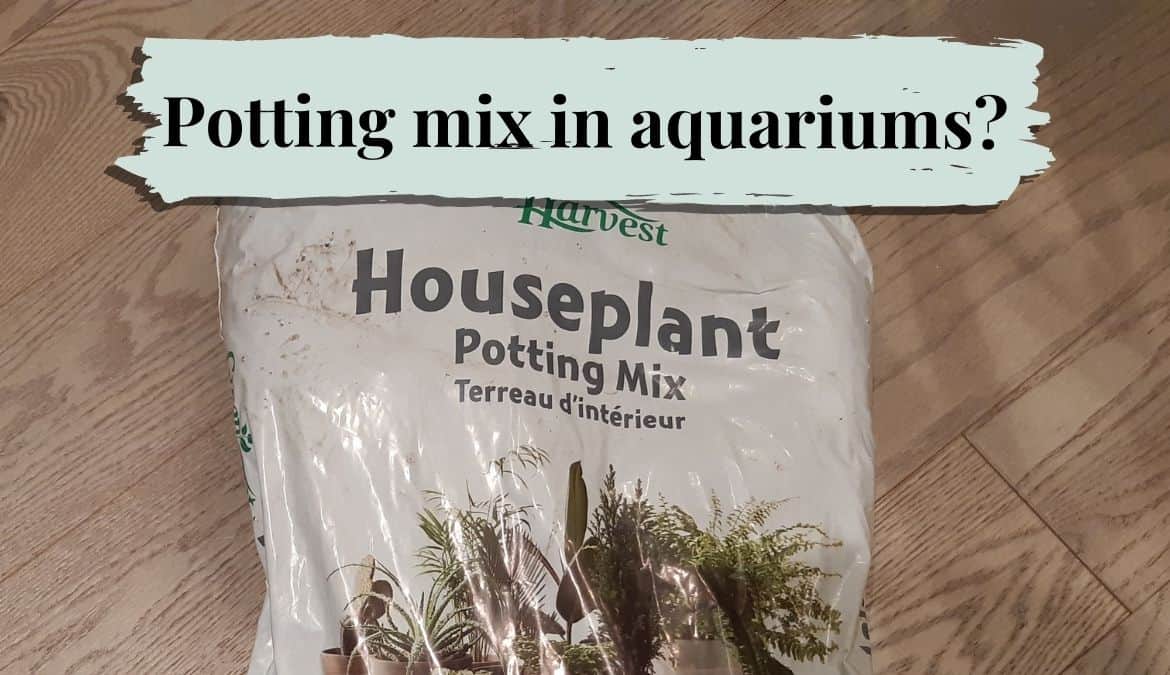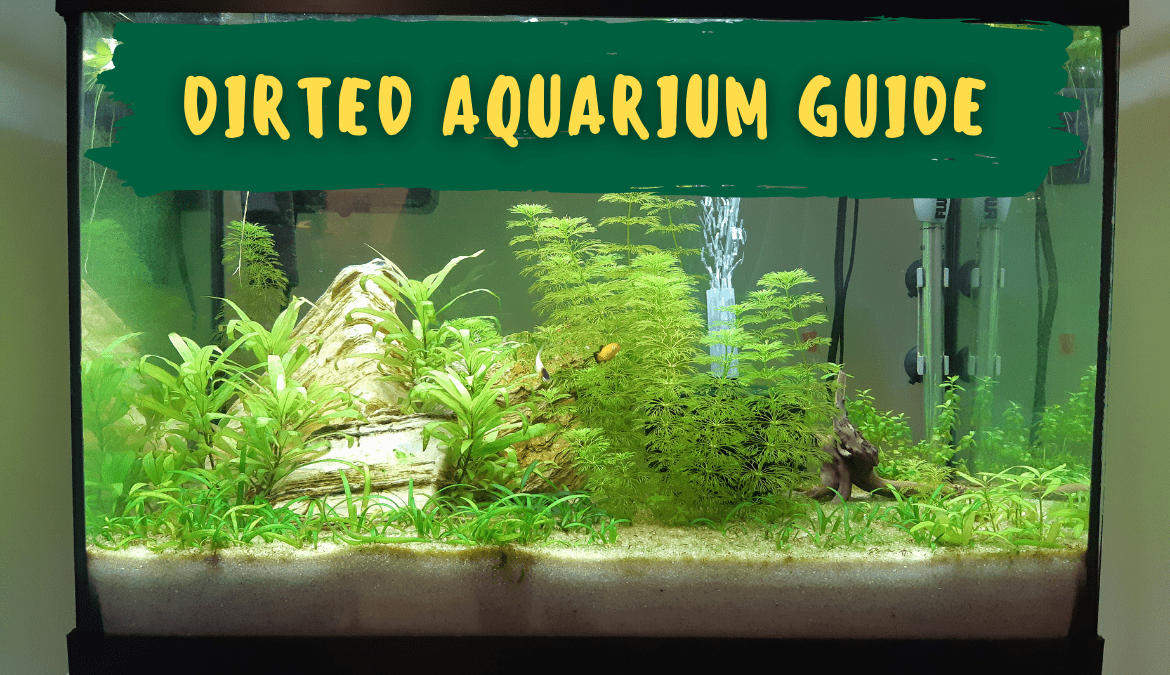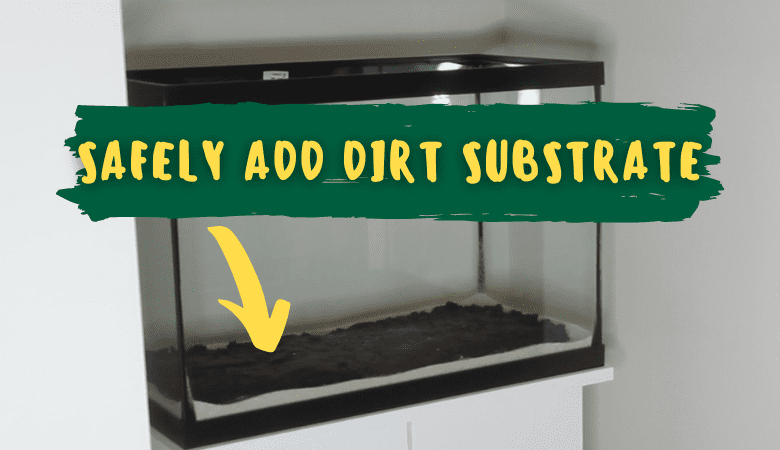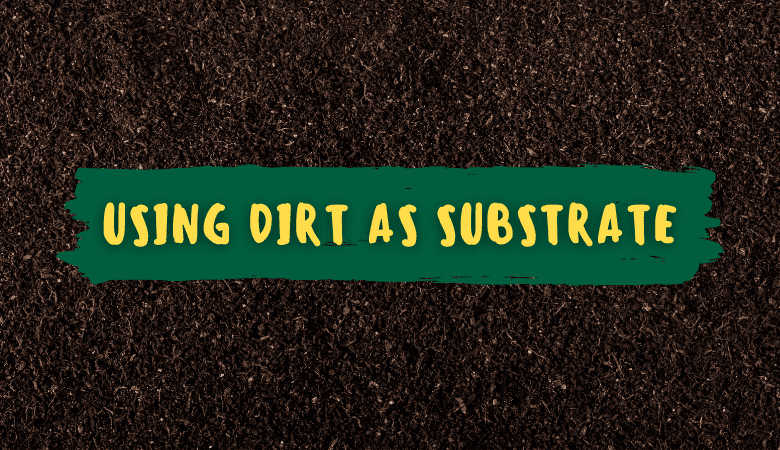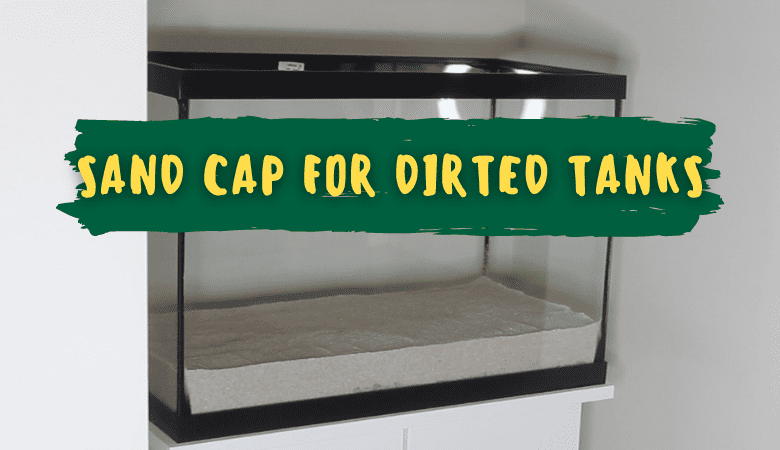A few months ago we were excited to start adding fish to our new dirted tank. The only thing preventing us was establishing a nitrogen cycle to remove toxic ammonia and nitrite. Luckily, that process didn’t take too long.
In our experience, dirted tanks take about 16 days to cycle. However, your cycle’s duration will depend on how large your tank is, what type of soil you use, how much soil you use, whether or not you have existing biomedia and many other factors.
In this article we’ll share a few important considerations we discovered while cycling our dirted tank.
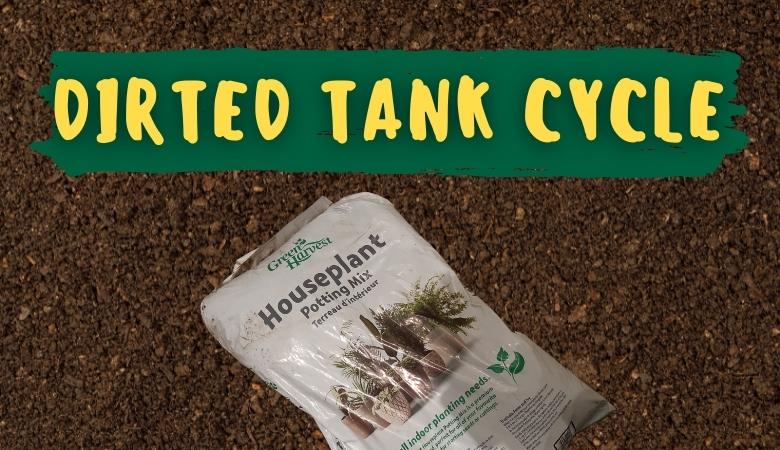
Can a dirted tank cycle itself?
Most dirted tanks will be capable of cycling themselves because they leech ammonia. This ammonia is the fuel that allows the nitrogen cycle to occur.
Many aquarists choose to use additives in their dirted tanks as well, which may add ammonia as well.
The amount of ammonia that leeches into your water column may depend on a few factors, such as what type of soil you use, how much you add and how thick your substrate cap layer is.
Organic soil may already contain nitrifying bacteria
The soil you choose for your dirted aquarium may already contain nitrifying bacteria. Just like an aquarium, organic soil contains detritus, microbes, decomposed plant and animal material and other substances that produce ammonia.
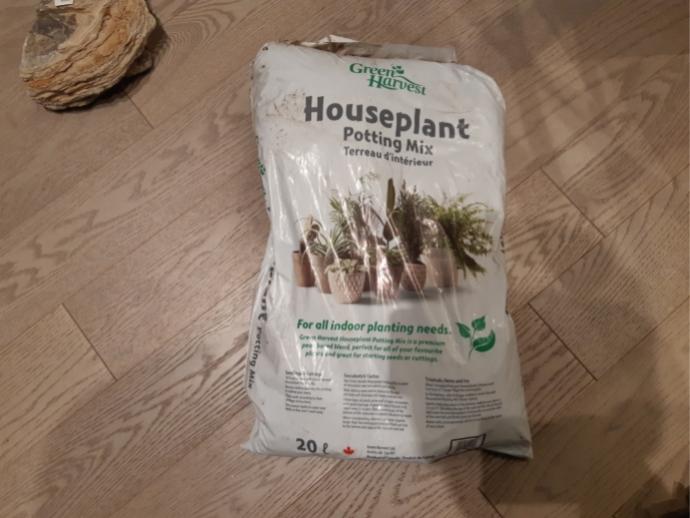
This creates an environment rich for nitrifying bacteria to thrive. Therefore, adding organic soil to your dirted tank may shorten the cycling process slightly.
A larger quantity of soil will cause a larger concentration of ammonia
It goes without saying that a 2-inch layer of soil will likely leech more ammonia into your tank than a 1-inch layer. Our 16-day cycle involved a 1-inch layer of organic garden soil with a 2-inch sand cap.
A substrate cap will reduce how much ammonia leeches into your water column
We choose to build our dirted tank using a deep substrate method. Meaning, we had a 2-inch sand cap on top of 1-inch of soil. We also lined the perimeter of the tank with sand as well to prevent the soil from leeching up the sides of the tank.
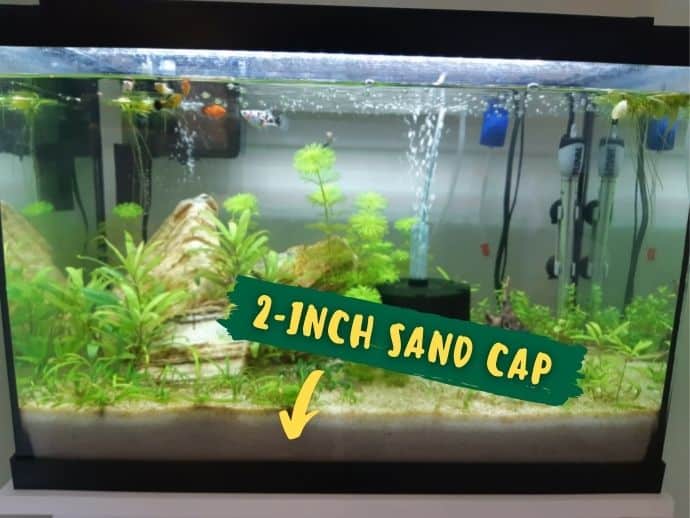
Even though the sand kept the soil well contained, we still experienced significant ammonia leeching during the first two weeks.
It’s possible that a thinner substrate cap may increase the rate at which ammonia leeches into your water column.
How to cycle your dirted tank faster
Add biomedia from another cycled tank
One of the most effective ways to quickly cycle an aquarium is by using biomedia from another tank. We have had success using sponge filters, biomedia balls, filter cartridges, substrate or decorations from another cycled tank.
In our experience, this often substantially shortens the cycling process. Many times this may allow you to cycle your tank immediately.
Be careful not to take too much from the other tank as it may negatively affect its own cycle.
An interesting suggestion we discovered was using a two-sponge filter, like the one in the picture below.
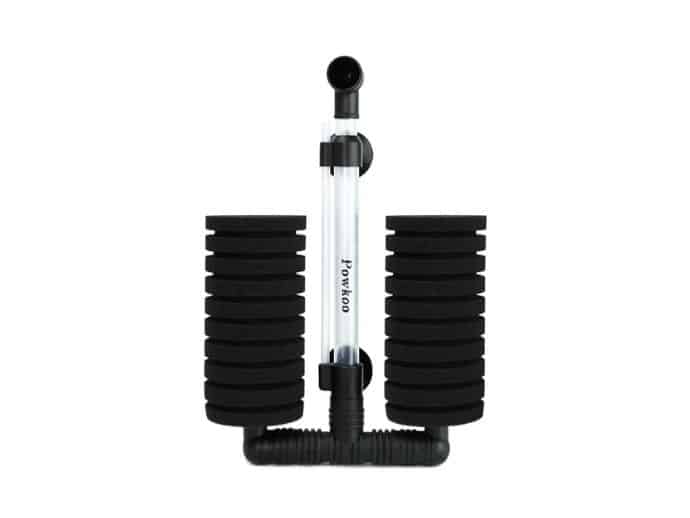
When added to a cycled tank, you can simply pull off one of the sponges and add it to another take to quickly establish a new cycle.
Add lots of plants, especially floating plants
Plants are another excellent cycling tool as they readily consume ammonia and nitrite. This is one of the reasons we recommend adding as many plants as you can to any new tank you establish.
Floating plants are especially useful because they don’t require much time to acclimate and establish root systems before they’ll start growing, unlike like many root-feeding plants.
Also, floating plants have access to atmospheric carbon dioxide and are close to the lights, which means they will grow quickly and absorb ammonia and nitrite more effectively.
Add pure ammonia to speed up the cycling process
You could consider dosing pure ammonia to your tank if your soil is not leeching ammonia and your nitrate levels are not increasing. We definitely recommend doing this without fish in the tank, as would be the case with most cycling methods.
We’ve used Fritz Ammonium Chloride to do this in the past. The idea here is that you’re providing fuel for the nitrifying bacteria to grow. Your beneficial bacteria colony will not grow if you don’t provide an ammonia source.
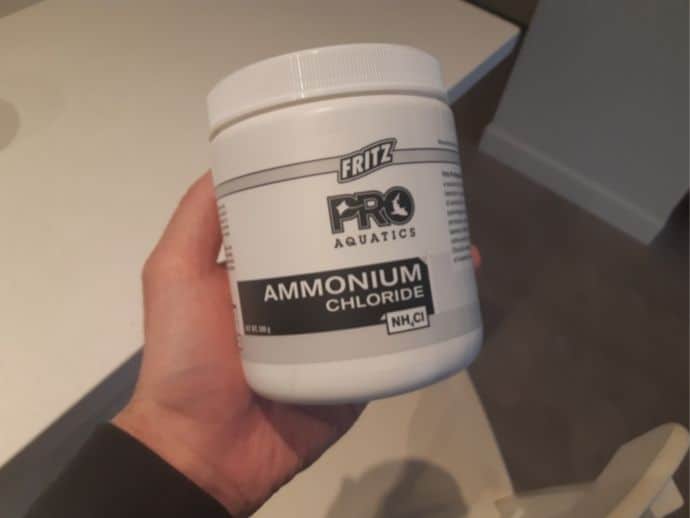
It’s important to add pure ammonia with no other ingredients or perfumes.
What we did added small amounts of the pure ammonia until the concentration reached 1.0ppm. We then wait for the bacteria to do colonize and consume it.
We found that the cycling process stalls when the nitrites exceed 5.0ppm. So we recommend performing a water parameter test every day or every other day to make sure.
If it does exceed 5.0ppm nitrite then perform a water change. Once you tank reads 0ppm ammonia and nitrite, add another 1.0ppm of ammonia and see if it removes all of it within 24 hours. If it does then your tank is cycled.
Tips for cycling your dirted tank
Add fish slowly to minimize biofilter requirements
The more fish you add to your tank, the more ammonia that will be created. We recommend adding fish slowly, even into a cycled tank. Otherwise, may create too much ammonia for your current biofilter to handle.
Consider adding 2-3 fish to begin with and then wait a week or so before adding more.
Make sure your tank has enough oxygen
Nitrifying bacteria use dissolved oxygen to convert ammonia into nitrate. Therefore, it’s important for the nitrification process that your aquarium has adequate oxygen levels.
Low-oxygen aquariums are not too common because the amount of surface area at the top of most tanks will create a gas exchange that dissolves oxygen into the water.
However, it’s useful to use something like a sponge filter or air stone to create surface agitation. This will increase the amount of dissolved oxygen in your aquarium because it creates a larger surface area for this gas exchange to occur.
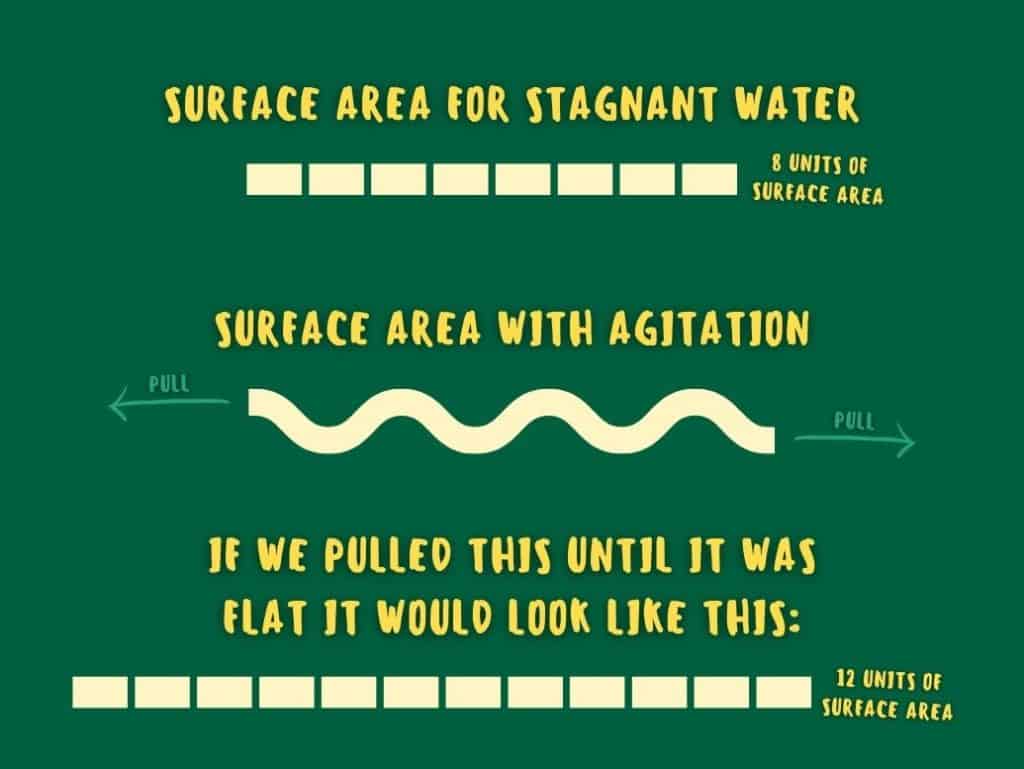
Make sure your carbonate hardness is above 3 dKH and your pH is above 6.8
Carbon is used during the nitrification process. If there isn’t a high enough concentration then then the nitrification process slows down. The same is true when the pH drops below 6.8.
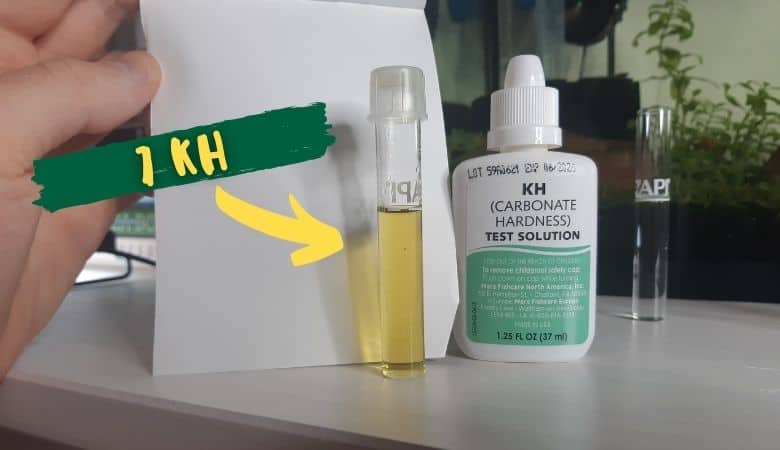
Increase your tank temperature to 78-80 degrees Farenheit
Bacteria grow more quickly in warmer water. Your tank will most likely already be set to somewhere between 75-80 degrees Farenheit is you’re keeping freshwater tropical fish.
However, it’s possibe you’ve chosen to delay adding fish and a heater until your tank is fully cycled. In this case, consider adding your heater now because it will likely help you cycle the tank more quickly.
Make sure you’re conditioning your tap water
Most tap water contains a small concentration of chlorine, which kills bacteria and makes it safe for human consumption. This chlorine is detrimental for tank cylcing because it will kill of your beneficial bacteria colony.
Always use water conditioner, such as Seachem Prime, before adding water into your aquarium.
Measure frequently for the first 2-3 weeks
Our tank was only leeching about 0.25ppm per day of ammonia during the first few days. But after about a week or so it started leeching as much as 1.0ppm per day. It’s not clear to us what change. Perhaps an air bubble burst from beneath the sand cap and released some excess ammonia into the water column.
After day 16 the tank consistently measured 0ppm of both ammonia and nitrite and has remain that way for months now.


